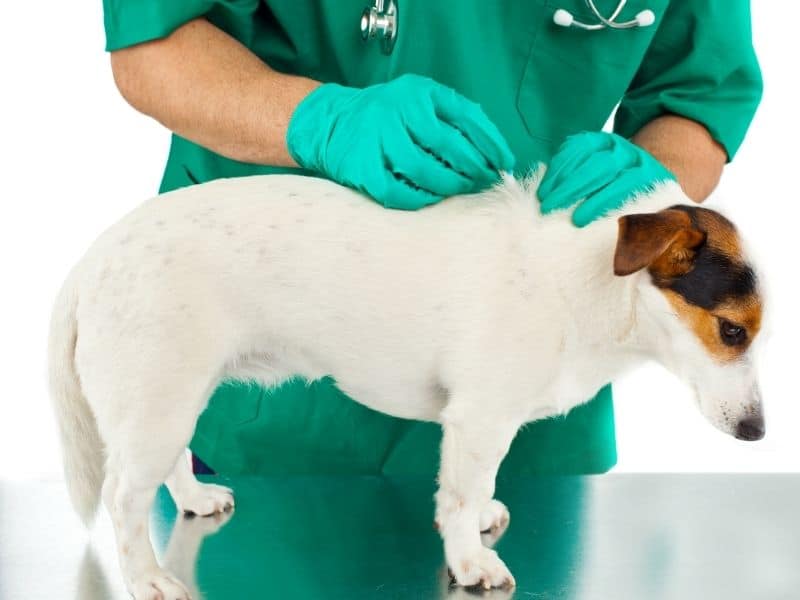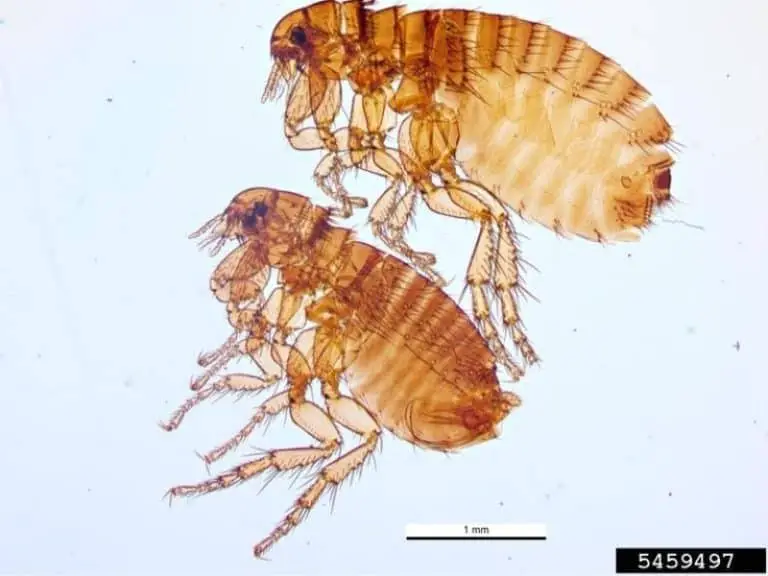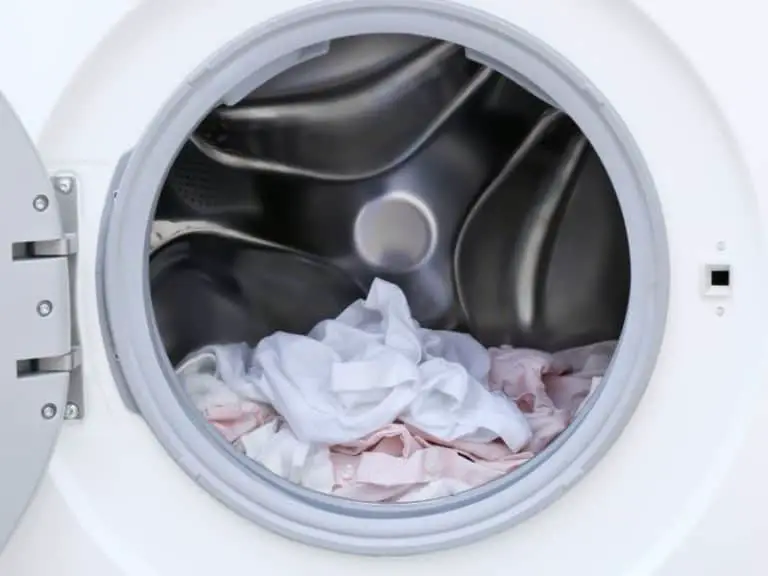9 Side Effects Of Fleas Left Untreated
You may be tempted to think that fleas are nothing more than a nuisance and can be left untreated, and you can just wait for them to go away or for the winter to come. A flea may be a simple parasite that does not require much out of its host.
The typical flea that feeds on your pet just needs the basic necessities in life: a safe and secure home, the constant availability of food, and the possibility of siring and ensuring the survival of the next generation of fleas and their species.
Your furry pet, along with the warm environment of your home, can provide all of these. While this living arrangement may be ideal for the flea, it only spells disaster for its hosts, specifically you and your pet. In this regard, we will discuss what will happen if you leave fleas untreated.
If fleas are left untreated, they will become more than a minor nuisance or irritation and cause serious health problems. Extreme discomfort is relatively minor compared to the health problems, infections, allergies, and parasites that they bring, which can even lead to the death of your pet.
Fleas are one of the most common parasites of dogs and cats, and the consequences that an untreated flea infestation brings can be deadly to you and your pets.
How exactly does their presence cause such serious health issues? Let us explore the various dangers that you can be exposed to if you let fleas on your pets and in your home remain untreated.
Nine Side Effects of Not Treating Fleas

If you have fleas on your pets and your home and you did not apply treatment to eradicate them, they can quickly multiply and cause various kinds of problems. This is why it is very important to always ensure that your pets are free of fleas.
In this regard, you should maintain a regular preventive program for your pets that will protect them and your home at all times. A good preventive program will also nip any developing flea infestation in the bud that will stop any fleas from multiplying and turning from a nuisance into a major problem.
Let us discuss the various side effects that will occur if you do not treat your pets and your home against fleas.
Flea Allergy Dermatitis or FAD
There are pets that have a severe allergic reaction to the saliva of fleas whenever the fleas infesting them start to bite them. This reaction causes your pets to experience very extreme discomfort even from just one flea bite.
Common symptoms that indicate that your pet has flea allergic dermatitis can include excessive licking, biting, or scratching around your pet’s back, tail, or groin.
Due to this discomfort, your pet will struggle enormously in order to alleviate the itch. Some dogs could even chew and rip out the fur in the itchy areas until they are laid bare and the skin is opened into a wound.
The development of these painful wounds, bumps, and scabs on their back, neck, and base of their tail are inflamed, raw, and reddened. Such areas are known as “hotspots.”
If these hotspots are allowed to remain unchecked and are not corrected early on, they will leave the skin vulnerable to various bacterial infections.
If ever these fleas get the better of your pet, your veterinarian can properly diagnose the condition if your pet is suffering from flea allergy dermatitis. This is done through the conduct of an intradermal skin examination. A pet with FAD will show up positive in the test result.
Your veterinarian can then provide you with the proper medication to treat the allergy and other associated problems, so that your pet need not scratch and chew their fur and skin.
The vet can also advise you on the effective means by which you can get rid of the fleas that are causing the problem because simply treating the symptoms will not be enough if the causative agent, the fleas, are not eliminated in your home.
The problem will just come back and pester you again. You will need to initiate an effective flea control management program.
Flea Bite Anemia
Your pet, just like other animals, needs a healthy amount of red blood cells to keep its body functioning well. Blood loss from a severe number of fleas feeding on your pet will cause a dangerously large drop in the number of blood cells that is required to maintain proper health.
This condition is known as flea bite anemia. It is a condition that is more prevalent in some dog breed than others. For example, puppies and small breeds have a higher susceptibility to this disease because of their smaller blood volume as compared to larger dogs.
In addition, sick and elderly pets are also especially vulnerable because they cannot manufacture new blood cells at the same rate as healthy and younger ones.
One flea is able to bite its host up to four hundred times per day, so that even a mild flea infestation is capable of causing serious blood loss in just a short period of time. Imagine the damage that a severe flea infestation can make.
In severe cases of flea bite anemia, your pet may exhibit clinical signs such as pale gums, weakness, and lethargy.
In severe flea infestations, the anemia could prove fatal to the animal. It is, therefore, crucial to have your pet treated immediately by a veterinarian because this is a medical emergency.
Your veterinarian may institute supportive treatment such as intensive care and blood transfusion. If veterinary intervention is immediately sought, most pets fully recover from the ordeal.
Tapeworms

Fleas are transmitters of pathogenic tapeworms that are capable of infecting the digestive tract of your pet. If a flea that contains tapeworm eggs is ingested by your pet, the egg develops in its gut until it reaches adulthood.
Adult tapeworms have segmented bodies that can reach a length of several feet.
They can also be up to one-half inch small and appear like a maggot. They have a mouth that hooks on the gut lining of the host’s small intestine. Here, they absorb the nutrients that pass through the gut to ensure their own nourishment at the expense of the nutrition of your pet.
The harmful effects that a tapeworm infection causes in its hosts are the following: an itch on their rear end; weight loss; nutritional deficiency and malnutrition; and debilitation.
Other symptoms include fatigue; increased appetite due to your pet’s need to get more nutrients; vomiting; and possibly chronic constipation or diarrhea.
Tapeworms are rarely fatal, although a severe tapeworm infection can seriously impair the health of your pet and bring more complications that can threaten your pet’s life.
You can inspect your pet’s poop if you suspect that it has a tapeworm problem. The tapeworms can appear in the feces as white bodies that look like rice grains. These worms can also be seen attached around your pet’s rear end.
Your veterinarian can confirm the presence of a tapeworm infection through a laboratory exam and can give your pet medications to eliminate the worms.
To prevent future tapeworm infections, it is also advisable to have a regular preventive deworming program for your pet.
Feline Infectious Anemia
Feline Infectious Anemia is caused by a bacterium known as Mycoplasma haemofelis.
This pathogenic microorganism attaches to your pet’s red blood cells. The bacterium is transmitted by fleas as well as other parasitic arthropods. An untreated flea infestation may cause your pet to become vulnerable to this type of anemia and bacterial infection.
If the infection is not treated, one-third of all cats which have this disease can die from the effects of severe anemia.
Feline Haemotrophic Mycoplasmosis
Another parasitic microorganism that is transmitted by external parasites such as fleas is the one that causes Feline Hemotrophic Mycoplasmosis or FHM. This disease was formerly known as haemobartonellosis,.
This parasite also destroys the red blood cells of your cat, causing severe anemia.
The symptoms of this infection include the following: pale yellow or white lining of the gums and eyes; lethargy; fatigue; severe weight loss; rapid breathing; elevated heart rate; enlarged lymph nodes; enlarged spleen; and, as previously mentioned, anemia.
If your cat experiences these clinical signs, then it is advisable to take it to the veterinarian. They will examine your cat’s blood with the PCR assay test and possibly also a FeLV or FIV test. A positive result for FHM will mean that your cat needs to undergo antibiotic treatment and medication to eliminate the fleas.
If your household has more than one cat, then you also have to have them treated. It is also crucial to eliminate the flea infestation in your home in order for the infection not to re-occur. If you have fleas in your home, they will very likely infect all of your cats, even if you cannot yet see any manifested symptoms.
Plague
Contrary to the belief of many, the plague that ravaged Europe during the Dark Ages is still very much with us today. This disease is also transmitted by fleas, and today, it is usually more prevalent in the southwestern region of the United States, particularly during late spring up to early fall, when most pets outdoors can be more susceptible to flea infestation.
The causative agent of the plague is transmitted by infected fleas that are carried by rodents. Your cat may be able to get the infection from either a bite from an infected flea or by eating an infected rodent, such as a squirrel, mouse, rat, or mole.
Three kinds of plague threaten the health of your pets.
These are pneumonic plague, septicemic plague, and bubonic plague. Their symptoms vary as well. Pneumonic plague causes a lung infection that can cause respiratory symptoms.
The bubonic and septicemic plagues have symptoms such as fever; rapid weight loss; vomiting; dehydration; dry mouth; swollen neck and head; ulcers in the mouth; diarrhea; eye discharge; swollen lymph nodes that can progress to abscesses; and swollen tonsils. Blood infection is also present in septicemic plague.
If left untreated, the infected cat could go into a coma. If these symptoms manifest in your pet, it is therefore very important to bring them to your veterinarian right away.
If your cat is to survive the infection, it is crucial to implement treatment and intervention as early as possible. Your veterinarian will isolate and confine your cat, treat it with antibiotics, and possibly provide hydration and supportive treatment. Your cat will also receive anti-flea medication.
Since the infection can affect both humans and animals, it is also very important to test both people and pets. Effective flea treatment and control of your home is also necessary, because the fleas are the source of the pathogenic microorganisms which are causing the disease.
Plague is also a highly important public health disease so that your public health officials should be immediately notified when your cat has been suspected or confirmed to have the plague. Your area and pet will be secured and possibly isolated to prevent the disease from spreading to others.
Zoonoses and Other Flea-Borne Diseases
Zzoonotic diseases also come from fleas. Zoonotic diseases, or zoonoses, are diseases which are transmissible from humans to animals and vice versa.
Aside from the plague, other important zoonoses in the US are cat-scratch disease, typhus, and spotted fever.
The first two are caused by the microbes Bartonella henselae and Rickettsia typhi, respectively.
The third is also known as California pseudotyphus, caused by Rickettsia felis.
Zoonotic diseases are a special disease classification because the risk of humans getting these diseases is increased in the presence of pets, and vice versa.
Many but not all diseases infecting humans and pets are zoonotic. This makes hygiene, proper disease prevention, and other measures to ensure health very important, especially since zoonoses can be deadly to both humans and animals.
Aside from carrying disease-causing microorganisms that infect pets, fleas can also carry diseases that infect people. The plague in particular is caused by the pathogen called Yersinia pestis. Another pathogen carried by fleas is Bartonella clarridgeiae, which is known to infect cats but is also suspected to infect humans.
Human Allergies
Allergic reactions from flea bites also occur in humans. If the symptoms of an allergic reaction include nausea, the difficulty of breathing, and swelling of the face and lips, this is considered a medical emergency, and prompt medical attention should be sought.
Flea bites can also make the host prone to infectious bacteria. If there are flea bites and the human host develops extreme pain at the bite site; swollen lymph nodes and glands; and excessive redness of the bite site; then medical attention is also warranted.
Flea bites look like tiny red bumps which are surrounded by an inflamed patch of skin. They usually occur in clusters and are commonly found on the lower extremities. They are similar to the bites of mosquitoes and bed bugs, although there are distinct differences.
Anxiety, Irritation and Fear
Flea bites are no small matter. They cause intense itches and extreme scratching in both humans and pets. Aside from the their negative consequences on physical health, fleas and their bites can also cause a toll on the emotional and mental well-being of their victims.
The constant itch, pain, and consequent scratching have caused much distress, anxiety, irritation, and even fear in the hosts.
People have reported fearing places where they have experienced a lot of flea bites that are left untreated. Peace of mind is lost when the bites are continuous, and the emotional and mental health of people can be mildly affected. If the fleas go untreated, the anxiety increases considerably.
The same is also true in pets. They experience irritation and pain, which lead to anxiety and extreme discomfort. This can affect their appetite and their mood and make them more susceptible to illnesses, due to the stress that they constantly experience.
The nuisance caused by the irritation, wounds, rashes, and hives that the victims may suffer affects the other aspects of their lives. In most cases, however, fleas are known to be a mere nuisance and can be dealt with. If carefully monitored and effectively treated, fleas will cause no serious symptoms.
Long and Short Term Impacts of Fleas on Pets, Humans, House
The short term impacts of fleas are the irritation, pain, and physical suffering caused by their bites, while their long term impacts are their negative consequences on our overall emotional, mental, and physical well-being. All of these impacts have been covered in our discussion of the nine side effects of flea bites.
Q & A
How long can a flea survive without eating?
A newly-emerged adult flea will endeavor to acquire a blood meal right away, but if it cannot do so, it can still survive for up to two weeks without feeding. Only after a female flea has fed can she lay her eggs.
Do flea larvae also suck the blood of pets?
Flea larvae are not like adult fleaswho feed on blood. Instead, they subsist on the organic debris present on carpets, floors, and around your home. At this stage of their life, they have no need to feed on you or your pets.
Medical Disclaimer: TheHomePestControl is a digital publisher and does not offer personal health or medical advice. The contents of this website are not intended to substitute for professional medical advice, diagnosis, or treatment.
Affiliate Disclaimer: As an Amazon Associate, I earn from qualifying purchases made on our website. If you make a purchase through links from this website, I may earn a commission at no additional cost to you.






